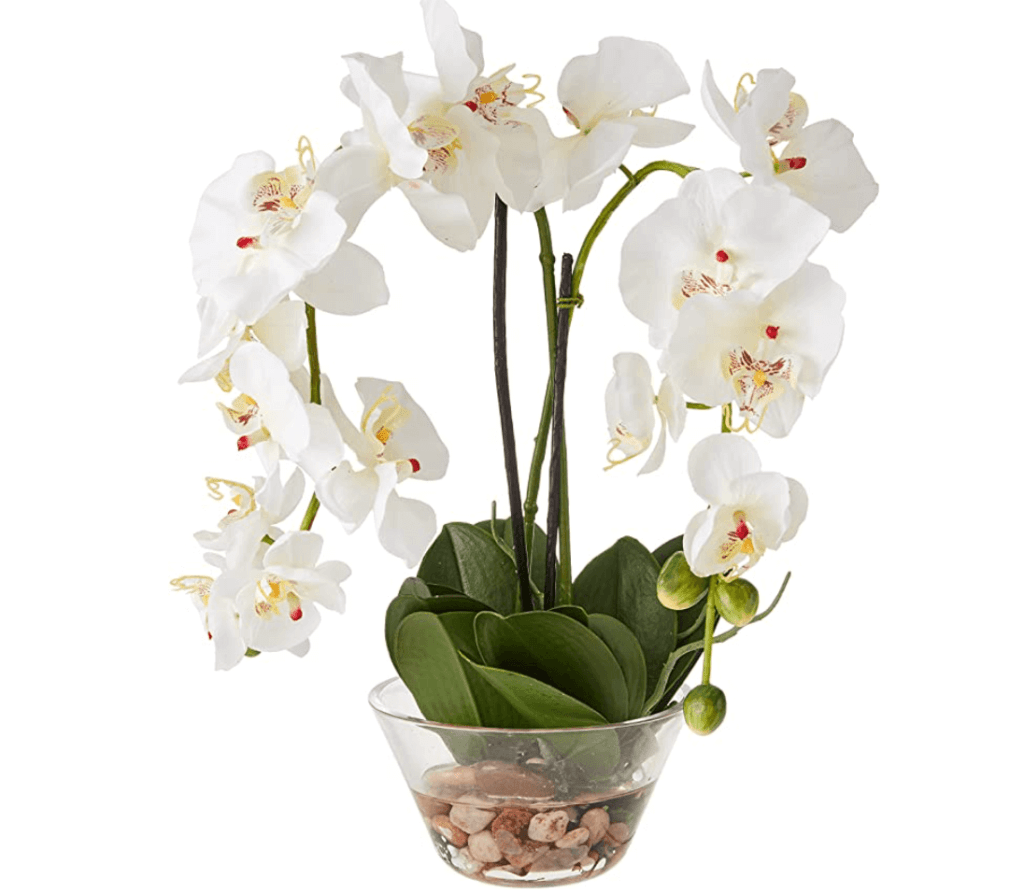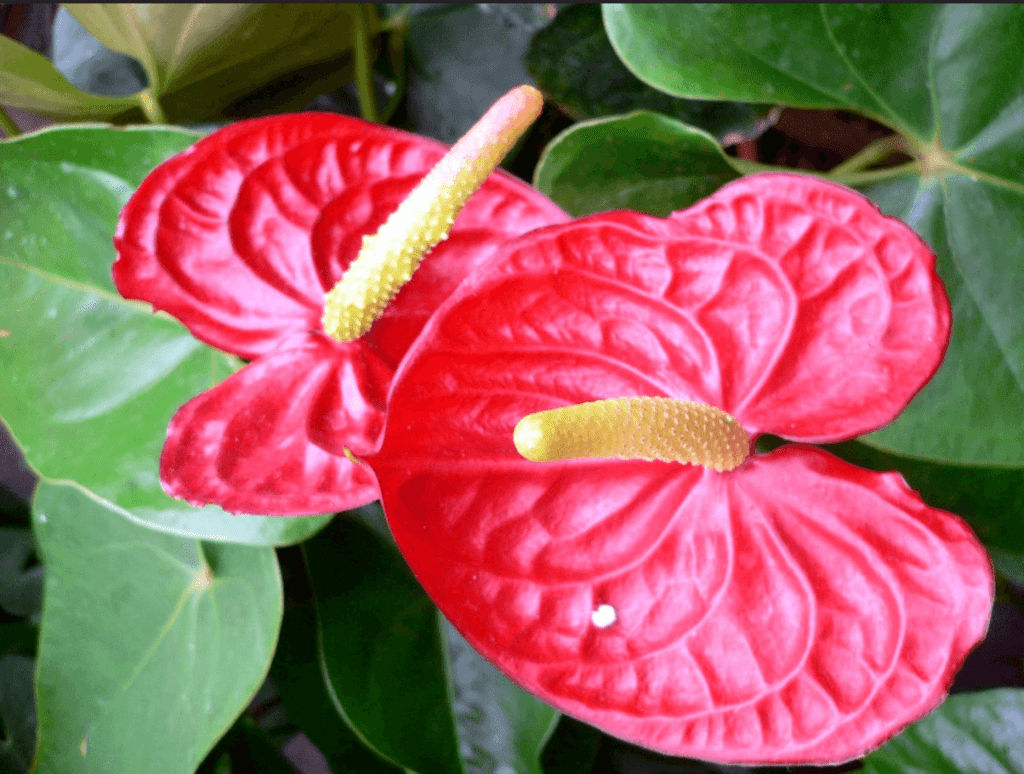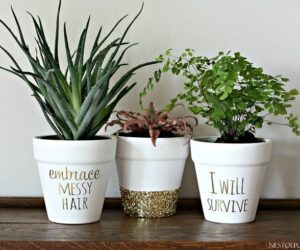Fact: homes with indoor plants are healthier than ones without.
Don’t believe us? There’s various research proving this, including one by NASA. Live plants help improve the indoor air quality in confined spaces. They also help improve the moods and decrease the stress levels of the inhabitants.
Tropical plants have some of the most beautiful flowers and foliage. And it’s only natural that you want to bring that beauty into your home. Here are 6 plants native to the Amazon rainforest that you can grow indoors.
1. Orchids
Scientific Name: Orchidaceae
If your goal is to bring bright pops of color into your home, then Orchids are the plants for you. There are about 28,000 species of orchids with unique colors and fragrances. Orchids are one of the most popular indoor plants because they’re easy to maintain.

Tips to care for Orchids indoors
One of the main necessities for orchids is a well-draining soil. Its roots are susceptible to root rot, so never let it sit in water. The ideal soil for orchids is a mix of moss, bark, cork, and even chunks of brick.
Orchids need bright light, but the light shouldn’t be direct. The plant goes through spells of needing heavy watering, in the summer, to almost no water, in winter months.
The ideal temperature for orchids is between 50° – 85°F.
2. Passion Flower
Scientific Name: Passiflora edulis
This is a vine plant that can be woody or herbaceous. The most striking feature of this plant is its flower. The vine has bright white and purple flowers that bloom from the spring to the fall season.
Tips to care for Passion Flower indoors
The vines of the plant can become pervasive if it’s not pruned regularly. So train your plant to grow on wire supports. The plant needs a lot of bright sunlight, especially during its growing season. So put it in a room with big windows.
The passion vine isn’t fussy about the soil conditions. It will thrive in regular potting soil. Its main requirement is water. In the summer, you may need to water the plant twice a day as that is its growing season. In the winter, you won’t need to water as frequently. But keep the plant moist at all times.
3. Anthurium
Scientific Name: Anthurium andraeanum
The Anthurium is a perennial plant that has a flower dubbed “flamingo flower”. It is a herbaceous plant that is toxic to pets and humans. So keep it away from the biting range of your furry friends.

Tips to care for Anthurium indoors
Anthurium thrives in bright and indirect sunlight. If you live in a place with dreary winters, then you can even give your plant direct sunlight.
The plant needs well-draining potting soil that retains moisture. You should never allow the plant to completely dry out.
The plant prefers high humidity. So if you live in a dry area, get a humidifier for your plant. It needs temperatures between 65° – 85°F to flourish. Anything below 40°F will kill your plant.
4. Poinsettia
Scientific Name: Euphorbia pulcherrima
Poinsettias are one of the most popular indoor plants. It has bright red and green foliage that is associated with Christmas. Hybrid versions of the plant have various colors including yellow, pink, and white.
Tips to care for Poinsettia indoors
Poinsettias need a ton of diffused sunlight throughout the day. The more sun exposure your plant gets, the more vigorous and longer-lived it will be. But be careful not to put it in direct sunlight as that may burn the leaves.
Overwatering will kill your poinsettia. Water it only when the surface feels dry to the touch. Give it adequate water till the water drains from the holes, but don’t allow it to sit in the draining tray.
The plant needs adequate humidity throughout the year. So either mist the plant in the winter or get a small space humidifier.
5. Peace Lily
Scientific Name: Spathiphyllum
This is an evergreen, perennial plant that has a gorgeous white bloom. In the middle, it has a 10-30 cm long spathe. It is an easy, low-maintenance plant to take care of that is mildly toxic to humans and pets when ingested.
Tips to care for Peace Lilies indoors
This is a shade-loving plant. The peace lily will tell you if it’s getting too much sunlight by curling its leaves. Give it filtered, indirect sunlight for a couple of hours in the day.
The peace lily needs rich potting soil with a lot of nutrients. The soil needs to be well-draining as too much moisture can kill it.
It is very easy to overwater your peace lily. Give it water only if the soil is dry one inch below the surface. In the summer, mist the plant to replicate humid rainforest conditions.
6. Pitcher Plant
Scientific Name: Nepenthes sp.
Everyone is fascinated by carnivorous plants. And you can grow this one indoors. The plant has modified leaves called pitfall traps. This catches insects that sit on it.
Tips to care for Pitcher Plants indoors:
Most varieties of pitcher plants need full sunlight year-round. If you have harsh winters, then you may need artificial lights to keep your plant alive.
The plant isn’t too fussy about the soil. The only requirement is that the soil drains well and is low in nutrients.
Water your pitcher plant regularly from the top to the roots. Give it adequate water but never let the soil become soggy. And if your tap water is chlorinated, consider giving your plant filtered water or allow the chlorine to evaporate before watering it.
If you have a typically insect-free house, then you will need to feed your plant once every 2-4 weeks. You can feed it with flies, dried crickets, or mealworms.
Still not sure about turning your home into a greenhouse? Then you can rent your house plants before making the decision to purchase. Get your indoor plant delivered to start your home garden.



